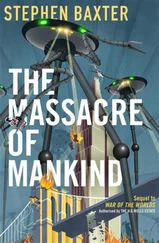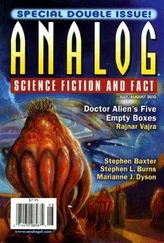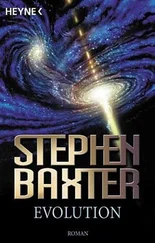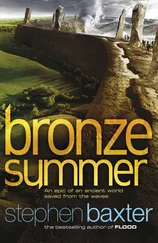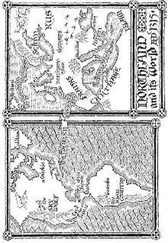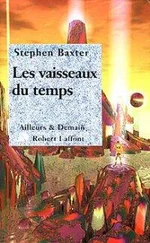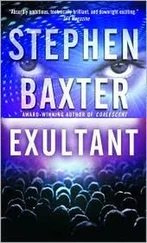Bromwich frowned. “I thought it was some big rock from space that killed the dinosaurs. I seem to remember listening to one of you assholes pitching for a Star Wars system to blast the rocks out of the sky. Like the one that’s coming in 2028—”
“The Cretaceous extinction was actually relatively minor,” Henry said. He pulled up more data from his laptop. “The Permian event was maybe the most significant Earth has suffered. Two hundred and fifty million years ago. A single giant continent, Pangaea, dominated the planet… Half the number of known marine families disappeared. Only two out of a hundred and thirty genera of brachiopods survived. All forty genera of the large fusulinid foraminifers were—”
“Enough,” Monica said.
“All told,” Henry said, “we lost eighty-three per cent of marine invertebrate genera, three-quarters of the amphibian families, eighty per cent of the reptilian.”
“A fucking big rock,” Bromwich said.
“Probably not a rock,” Henry said. “Violent volcanism is the best hypothesis.”
“You say,” David Petit said. Petit was a Nobel Prize winning chemist, a thickset man with a Brooklyn accent. “Others don’t agree—”
Bromwich snapped, “And is this where it will stop? With this Permian shit?”
“No,” Henry said. “Ultimately, the mantle infestation will be the most serious. When the Moonseed is spreading under the crust.”
“Why?”
Monica saw that Bromwich still didn’t understand.
“Because,” she said, “it will blow the crust off the planet.”
“Like Venus.”
“Yes, Admiral. Like Venus.”
Silence, briefly.
Henry brought up molecular structure charts and scanning microscope images. “We think we have a handle on how the Moonseed works. If not why. It primarily attacks basaltic rocks, particularly those rich in olivine.”
“Like the Earth’s mantle material.” That was Alfred. “And comet dust, and primordial debris.”
The Admiral asked, “Primordial?”
“Left over from the formation of the Solar System,” Alfred said. “Admiral, this thing feeds on the most basic rock suite in the universe. It is well adapted to conditions in this universe. More so than we are, in fact. We should have suspected the existence of this thing. Even logically deduced it.”
Henry said, “It appears to reassemble the crystalline structure of a mass of rock in a recursive form which—”
“In English, doctor,” Monica said.
He brought up another image. A slice of rock, the crystal structure picked out with false colour. A maze of dwindling tunnels, disappearing beyond the resolution of the “scope into some invisible centre, a heart of darkness, “It is changing the structure of the rocks it touches. Building something.” It was a kind of bootstrap process, Henry said. The manipulation of the outer layers of a crystal structure enabled the more detailed rebuilding of inner layers, which in turn enabled changes on a still smaller scale… and so on. Like waldos, Monica thought, each layer of miniaturization building the next level down, on to invisibility.
“There is a certain logic in this,” Alfred mused. “Between planets, where resources are scarce, one might expect an evolutionary drive of this type. Towards the very small — the utilization and building-in of complexity into even the smallest grains of matter available.”
David Petit, the chemist, locked his boxer’s hands behind his head. “Your qualifications are all in geology, Dr Meacher. True?”
“Yes.”
“Not in chemistry or particle physics or biology.”
“That’s true.” Henry was quite unfazed.
Petit stopped there, satisfied he had made his point. For now.
Alfred Synge said, “Of course maybe this isn’t some kind of geological thing, or even biological. Maybe this is nanotech. By which I mean the manufacture of materials and structures with dimension less than a billionth of a meter. Molecular machines—”
That started an argument.
“Nanotech is on our own horizon,” insisted Alfred. “We can manipulate atoms with microscope probe elements, we can use the amino acids to make new, non-natural proteins. We can posit self-replicating assemblers that can take inexpensive raw materials — any hydrocarbon feedstock would do — and produce anything from a rocket ship to a disease-fighting submarine that would roam your bloodstream—”
David Petit slammed the table with the palm of his hand. “Nonsense,” he said. “Sure you can manipulate atoms. You can even get them to hold still for a while. But only by cooling your sample down to liquid helium temperatures. At room temperature, the atoms of your assemblers will start combining, with the ambient air, water, with each other, whatever medium your assemblers are floating in.
“And what about the laws of thermodynamics? What about information flow? How do these assemblers get their information about which atom is where, in order to manipulate them? How do they know where they are themselves, to get from their tiny supply depots to wherever they are supposed to be working? How do they get their power for breaking up material, and navigating, and computing?” He turned to Bromwich. “Admiral, this is just more nonsense. Nanotechnology is cargo cult science. A plot generator for lazy sci-fi writers. Nobody has demonstrated any of this, outside computer simulations, where of course you can do anything you like.”
Evidently, Monica thought, watching him, the good doctor has a beef against nanotech. She wondered which grant application of his had been turned down in favour of some sexy nano-proposal.
Henry said mildly, “I’m not here to defend nanotech. The Moonseed, however, is doing one simple thing: building inward, and smaller. The structure, in fact, seems to be similar on all scales. You don’t need much stored information, or computation, or materials transfer to achieve that.”
The Admiral frowned. “I wish you scientist types wouldn’t argue with each other. So the Moonseed is some kind of artificial phenomenon. We’re looking at tiny machines here. Is that what you’re saying?”
Henry said, “Maybe they are artificial. Maybe they are alive. It may be that when a life form is sufficiently advanced, there is no difference. It may not matter anyhow.”
Bromwich shook her head, visibly angry, dissatisfied at the speculation and lack of clarity. “Continue with your analysis,” she told Henry. “What’s this thing for? What’s the point of rebuilding a rock?”
“Concentration of energy,” Henry said.
“What?”
“There is enough chemical energy in a tank of gasoline to achieve unified-theory levels of energy density — if all the energy could be applied to a single proton. Which we can’t achieve. We build colliding accelerators miles long to try to emulate that, but we don’t even come close, not within orders of magnitude.”
Bromwich pulled her lip. “You’re saying these little critters turn lumps of rock into — uh — miniature particle accelerators.”
“That’s exactly it, Admiral.”
Henry showed images from Edinburgh, exploding rocks around a volcanic plug called Arthur’s Seat, evidence from the lab where Apollo sample 86047 had exploded.
“The contaminated rocks achieve densities, towards the centre, at which fusion processes, at least, can occur. When the Moonseed destroys a chunk of rock, the outcome is dust, and a flood of high-energy radiation, and more Moonseed. It’s a way of propagating.”
“Mini nukes?” asked the Admiral.
“Yes.”
“What do you mean, at least fusion?”
This was Monica’s speciality. “He means the Moonseed constructs may reach greater levels of force unification than just fusion.”
Читать дальше
Конец ознакомительного отрывка
Купить книгу


